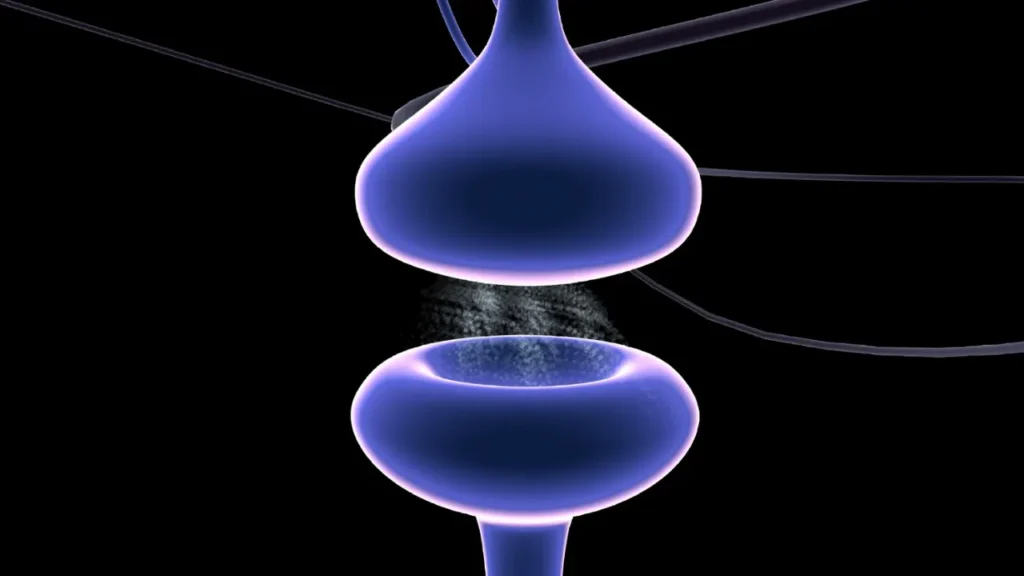The perennial herb known by its scientific name, Sanicula europaea, is found in the forests of Europe and some regions of Asia. This plant is a member of the Apiaceae family and has been used for ages in herbal medicine because of its many medicinal uses. The purpose of this article is to examine the characteristics of sanicle, as well as its health advantages, recommended dosage, possible adverse effects, potential drug interactions, safe usage guidelines, and potential use as a dietary or nootropic supplement.
You May Also Like:
CBD for Concentration: The Productivity Hack for Energy and Focus
Agave: Benefits, Dosage, Side Effects, Drug Interactions, And Other Important Information
Sanicle: Benefits, Dosage, Side Effects, Drug Interactions, and Other Important Information is an original (NootropicsPlanet) article.
Nature of Sanicle
Sanicle is distinguished by its tiny, white, or greenish-white blooms and its characteristic green foliage. Traditional medicine has utilized the entire plant which includes its roots, leaves, and petals. Sanicle’s chemical components include flavonoids, tannins, and saponins which are compounds that are frequently linked to the fruit’s therapeutic qualities.
Health Benefits of Sanicle
1. Wound Healing
Due to the astringent and antibacterial qualities of its tannin and saponin content, sanicles have long been used in the treatment of wounds. These substances have the ability to stop bleeding, stop infections, and speed up the healing process for cuts and abrasions.
2. Respiratory Health
Sanicle has long been used to treat respiratory ailments like colds and coughs. Its antibacterial activity can help fight infections, while its expectorant qualities aid in removing mucus from the airways.
3. Digestive Health
Sanicle has astringent and anti-inflammatory qualities that may help with digestive health. Because of its capacity to lessen inflammation and repair the integrity of the gut lining, it has been used to treat diarrhea and other gastrointestinal disorders.
4. Cognitive Enhancement
While direct research on sanicle’s nootropic effects is limited, the presence of flavonoids suggests the potential benefits of sanicle in enhancing cognitive functions. These compounds can exert neuroprotective effects, potentially improving memory, alertness, and focus by reducing oxidative stress and inflammation in the brain. Additionally, saponins may influence neurotransmitter levels, further contributing to cognitive enhancement.
5. Antioxidant and Anti-inflammatory Effects
Sanicle’s antioxidant qualities, which are mostly related to the flavonoids it contains, can scavenge free radicals and lessen oxidative stress on the body and brain. This may help maintain general health and delay the emergence of chronic illnesses. Sanicle’s anti-inflammatory properties are helpful in lowering inflammation, which is linked to a number of health problems, including cognitive impairment.

Chemistry of Sanicle
Sanicle (Sanicula europaea) is a rich source of various phytochemicals that contribute to its medicinal properties. The primary chemical constituents include:
Saponins: Saponins are glycosides with a diverse array of biological functions. It has been demonstrated to have anti-inflammatory and antibacterial qualities, and it can regulate immunological responses. They might also have an effect on cognitive health since they can alter neurotransmitter levels.
Tannins: Polyphenolic substances have antioxidant effects. Tannins contribute to sanicle’s wound healing property by encouraging blood clotting and lowering inflammation. They also have antibacterial properties, which help to protect wounds from infection.
Flavonoids: A wide range of phytonutrients are present in various plants. Sanicle contains flavonoids such as quercetin and kaempferol, which have antioxidant and neuroprotective properties. They can pass the blood-brain barrier and may improve cognitive performance by shielding neurons from oxidative stress and encouraging neuroplasticity.
Essential Oils: Sanicle contains trace levels of essential oils, which can enhance its medicinal effects due to their antibacterial and anti-inflammatory qualities.
These substances operate together to give the health benefits associated with sanicle, but the precise processes by which they interact with human physiology, particularly in terms of cognitive enhancement, require further scientific exploration.
Physiological Mechanism of Action of Sanicle
The physiological mechanism by which sanicle exerts its nootropic effects can be linked to its high phytochemical content. Saponins, for example, are known to affect neurotransmitter levels and may improve cognitive function. Flavonoids have antioxidant capabilities that protect brain cells from oxidative stress and enhance neuroplasticity. Sanicle’s anti-inflammatory properties may potentially help it to play an important role as a nootropic, as inflammation is known to impair cognitive performance.
The precise mechanism of sanicle activity on the brain and cognitive functioning is still under investigation. However, the combinatorial benefits of its phytochemicals point to a comprehensive strategy for improving cognitive performance, including neuroprotection, modulation of neurotransmitter activity, reduction in inflammation, and most importantly, general wellness.


Optimal Dosage of Sanicle
The scarcity of clinical trials makes it difficult to determine the ideal dosage of sanicle for nootropic uses. Traditional use and anecdotal data suggest that small amounts, often using dried sanicle ranging from 1 to 3 grams as tea. However, without clear scientific studies to back up these claims, you should take caution and maybe contact a healthcare physician before integrating sanicle into your routine.
Side Effects of Sanicle
While sanicle is generally considered safe when used in moderation, potential negative effects should not be overlooked. Because of its diuretic characteristics, overuse of sanicle can result in dehydration and electrolyte imbalance. Tannins, while beneficial for their antibacterial and therapeutic effects, can cause gastrointestinal issues if ingested in large quantities. Individual sensitivities to any supplement can vary, so it’s best to start with smaller amounts and watch your body’s response.


Potential Substance Interactions with Sanicle
The interaction of sanicle with other drugs, especially pharmaceuticals, is a source of concern. Given its potential effects on the cardiovascular system and diuretic qualities, sanicle may interact with blood pressure and diuretic drugs. Furthermore, its propensity to influence cognitive functions implies that it may interact with neuroactive chemicals and drugs, such as antidepressants and anxiolytics. Patients using any type of medication should consult with a healthcare provider to avoid any negative interactions.
Responsible Use of Sanicle
Given the possible health advantages and our limited understanding of sanicle’s nootropic effects, you should consider the guidelines below if you are interested in taking sanicle, for cognitive enhancement or general wellness.
- Consultation with a Healthcare Provider: Before incorporating sanicle into your routine, especially if you are on drugs or have underlying health conditions, consult with a healthcare expert.
- Starting with Low Doses: Start with lesser dosages of sanicle and increase based on tolerance to reduce the chances of side effects.
- Monitoring for Side Effects: Keep an eye out for any negative reactions and stop using immediately if you notice any side effects.
- Quality of Supplements: To ensure purity and prevent impurities, make sure that any herb or supplement for sanicle comes from reliable sources.
- Balanced Approach: Sanicle should be included in a comprehensive strategy that consists of a balanced diet, frequent exercise, and enough sleep.
Sanicle:
Conclusion
Sanicle is a common name for a type of plant distinguished by its tiny, white blooms. Sanicle can be found throughout Europe and some parts of Asia as it is a perennial herb from the Apiaceae family. Rich in bioactive compounds such as flavonoids and tannins, sanicle supplements are believed to possess anti-inflammatory, antimicrobial, and antioxidant effects. From the article, it is believed that these properties may contribute to Sanicle’s properties in improving cognitive health.
However, it still lacks scientific evidence to prove its efficacy in terms of brain health support. Thus, it is pivotal for you to seek advice from medical experts before using this supplement for your specific needs. You would also need to choose products from reputable sellers as different production methods may result in products with vastly different qualities.


References:
- Sanicle – Uses, Side Effects, and More. Retrieved From:https://www.webmd.com/vitamins/ai/ingredientmono-86/sanicleAntiviral Activity of Sanicula Europaea L. Extracts on Multiplication of Human Parainfluenza Virus Type 2. Retrieved from:https://pubmed.ncbi.nlm.nih.gov/10441789/
- Saniculoside N From Sanicula Europaea L. Retrieved from:https://pubmed.ncbi.nlm.nih.gov/9392884/
- [On The Contents of Some Saniculoids. 1. Sanicula Europaea L.–Isolation and Quantitative Understanding Of Chlorogenic And Rosmarinus Acid]. Retrieved from:https://pubmed.ncbi.nlm.nih.gov/5881029/
Important Note: The information contained in this article is for general informational purposes only, and should not be construed as health or medical advice, nor is it intended to diagnose, prevent, treat, or cure any disease or health condition. Before embarking on any diet, fitness regimen, or program of nutritional supplementation, it is advisable to consult your healthcare professional in order to determine its safety and probable efficacy in terms of your individual state of health.
Regarding Nutritional Supplements Or Other Non-Prescription Health Products: If any nutritional supplements or other non-prescription health products are mentioned in the foregoing article, any claims or statements made about them have not been evaluated by the U.S. Food and Drug Administration, and such nutritional supplements or other health products are not intended to diagnose, treat, cure, or prevent any disease.
